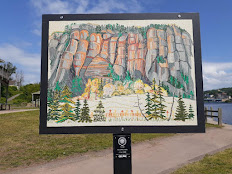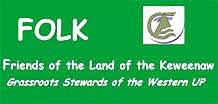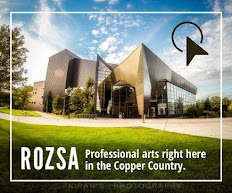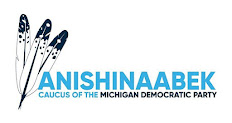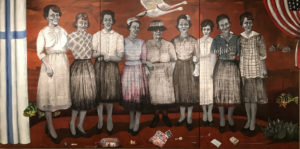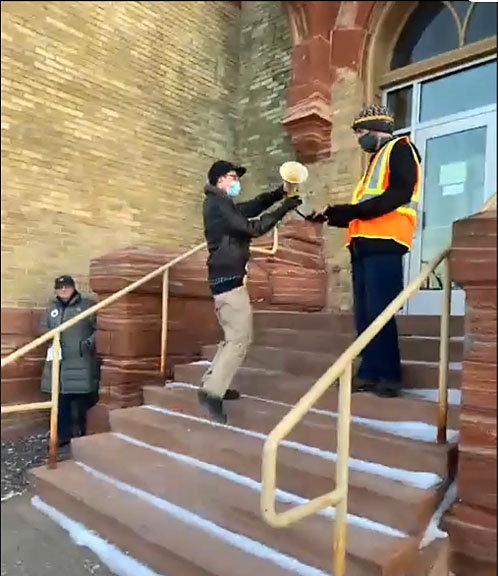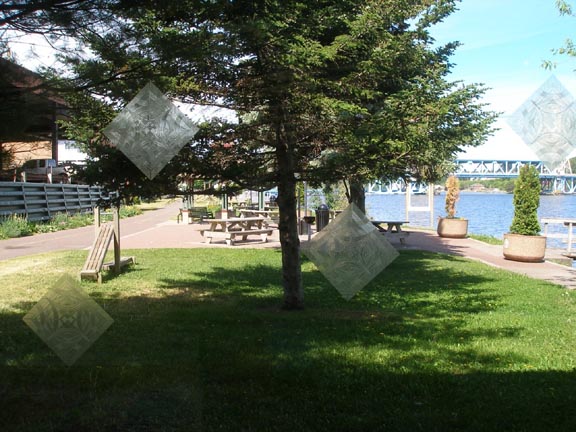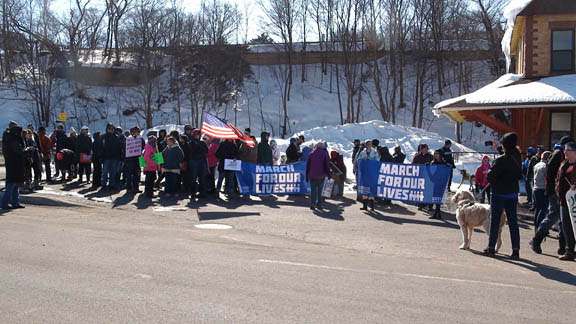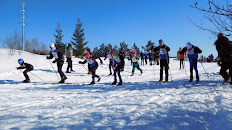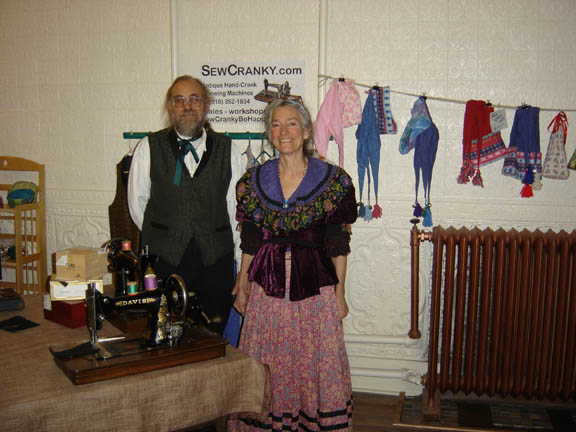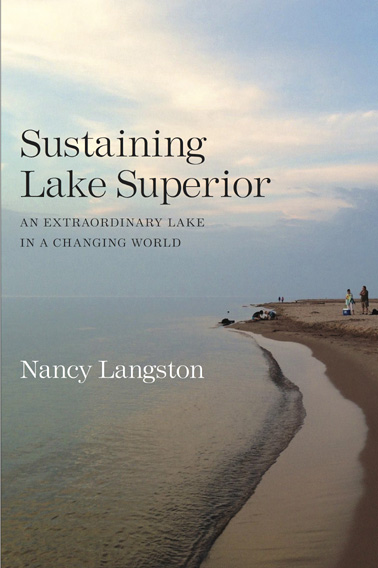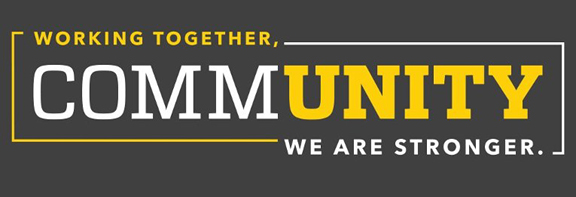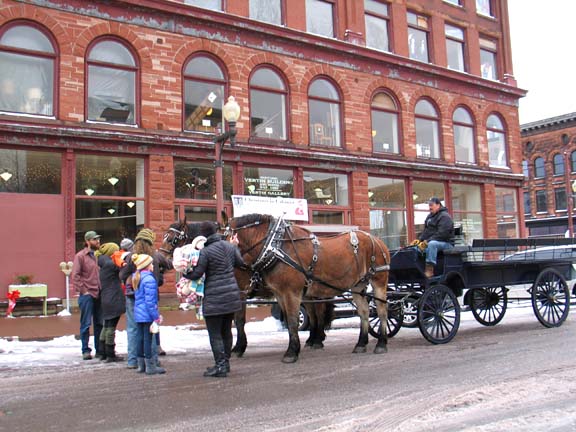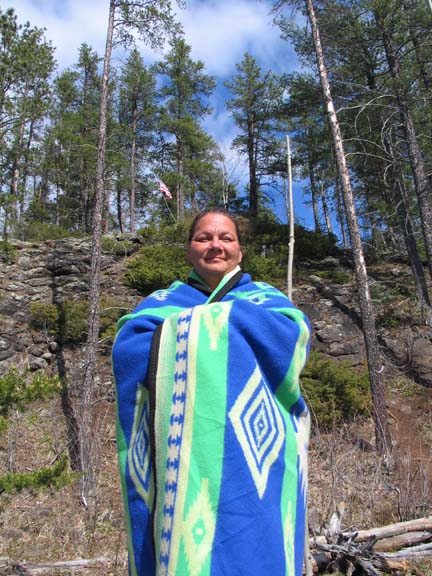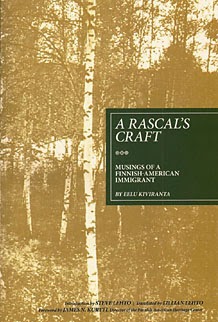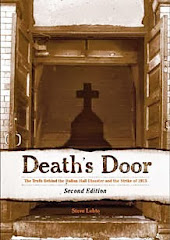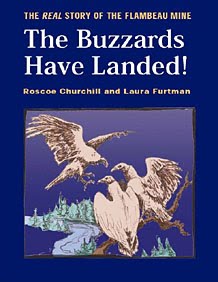By Barbara With*
Posted Dec. 31, 2013, on Wisconsin Citizens Media Cooperative
Reprinted in part with permission.
In an interview on WORT 89.9 (Madison, Wis.) on December 30, 2013, host Brian Standing and translator Martin Alvarado spoke with geologist Antonio Ramos, a member of the Spanish ecological federation Ecologistas en Acción (Ecologists in Action) who are helping to bring charges against Gogebic Taconite (GTac) President Bill Williams. Williams was general manager at Cobre Las Cruces copper mine near Seville when the company allegedly conducted unpermitted and illegal activities that caused irreparable damage to the aquifer serving Seville.
According to Ramos, once the water from the mine was exposed to oxygen, a chemical reaction took place that generated acid and liberated arsenic from the rock. This contaminated, acidic water should not have been pumped back into the aquifer. However, to save money and maximize profits, Cobre Las Cruces injected the contaminated water back into the aquifer, which was not permitted. All operations at the mine were halted, which is when the Regional Authority also discovered several illegal wells that had been drilled at the bottom of the mine. ... Click here to read the rest of this article on the Wisconsin Citizens Media Cooperative Web site.
*Author Barbara With is a citizen journalist from La Pointe, Wis.
Tuesday, December 31, 2013
Monday, December 30, 2013
Tech Goes to Thailand: Buddha’s Relics, Sugar Threads and Gigantic River Prawns
By Jennifer Donovan, Michigan Tech director of public relations
Posted Nov. 25, 2013, on the Tech Goes to Thailand blog
HOUGHTON -- [Editor's Note: Jennifer (Jenn) Donovan, director of public relations at Michigan Technological University, spent the month of November as a Fulbright Specialist in communications at Kasetsart University in Bangkok, Thailand, where she was working with the Faculty of Engineering to improve their external communication of their work and to help them develop an international marketing plan for expanding international exchange opportunities for students and faculty.
Jenn, who often shares her Michigan Tech News stories with Keweenaw Now, has also shared her adventures in Thailand on a blog through Michigan Tech. Here is one of her posts, reprinted here with permission.]*
It’s called Ayutthaya, the Ancient City, a bustling town about an hour from Bangkok and home to an amazing variety of tourist treats: the Chao Sam Phraya National Museum, a life-sized reproduction of a traditional Thai river house, piles of rubble that are all that remains of the original Ancient City, a floating market. Also steamed river prawns -- the most enormous shrimp I’ve ever seen -- and roti sai mai, a popular Thai confection made of fine threads of sugar wrapped in paper-thin crepes.
(Photo inset: Jennifer Donovan, Michigan Tech director of public relations. Photo courtesy Michigan Tech University)
Ayutthaya was the capital of Thailand 400 years ago, before a second war with Burma forced the Thais to move their capital to Bangkok. Now it’s a popular tourist destination for Thais and foreigners alike. Tour buses clog the narrow streets.
Ing and Kade, who work in the International Undergraduate Programs (IUP) office at Kasetsart University, pick me up at my hotel in a behemoth of an air-conditioned university van. They bring three IUP students with them: Paeng, Win and Smart.
Pictured here, from left, are Kade, Ing, Smart, Paeng and Win. (Photos of Thailand © and courtesy Jennifer Donovan. Reprinted with permission.)
The students, whose computer engineering program is taught in English, are much more fluent than Ing and Kade. Especially Win, who attended an international high school. He wants to study in the US. So do Paeng ("my friends call me Nichy") and Smart, who visited Detroit for a month on an exchange program when he was 12. Nichy is just in her first year at Kasetsart, but she has already attended an open house for students who may qualify for the prestigious Royal Thai Scholar program, a full ride at a US university, funded by the Thai government. Royal Thai Scholars are the best of the best Thai students. At that open house, she met with Michigan Tech Graduate School’s Kristi Isaacson, and she’s eager to hear more about opportunities at Michigan Tech. I give her my card and urge her to email me. "I can get you some information too, and reading my emails will help you practice your English," I tell her. "Thank you very much," she says with a little bow.
We start our tour of Ayutthaya at the National Museum. Leaving our shoes at the door, we receive instructions about photography inside. It is OK to take pictures in the main halls of the museum, we are told, but no flash photography, and the person shooting the picture cannot appear in the photo. That’s hard to do anyway, unless you’re into "selfies."
The museum is named for King Boramarjadhira, known as Chao Sam Phraya, who ruled in Ayutthaya in the 15th century. It is filled with antiquities recovered from Ayutthaya when the Ancient City’s ruins were excavated.
Relics include a massive cast bronze Buddha’s head dating from the 13th to 14th century, enormous carved wooden temple doors, a stone image of a seated Buddha from the 7th to 8th century and cabinets containing coins of every era, back to the stone-like money of the earliest Thai periods.
Garuda -- a mythical man-eagle -- graced the bow of a royal barge.
In two "treasure rooms," guarded and air-conditioned, are relics retrieved from basement chambers of Wat Rajaburana and Wat Mahathat. Wats are Buddhist temples in Thailand. One room is filled with sacred Buddhist treasures, including a splendid jeweled edifice said to contain the bones of the Buddha. In this room, Smart and Nichy kneel to pray to Buddha, and Win asks me if I am Christian. If you think explaining Unitarianism is hard in the US (and it is), try explaining it to a Thai. "I am not Christian," I say. "I am Unitarian. I believe in the sacred spirit of all religions." Win understands my English. I’m not sure he understands what I just said. "I am an atheist," he informs me. "We welcome atheists in the Unitarian church too," I tell him. "We welcome everyone, as long as they respect other people’s beliefs." He blinks.
I have no photos to show you of the treasure rooms. Photography is absolutely forbidden in them.
The other treasure room contains ancient royal artifacts such as crowns, eating utensils, swords and jewelry, most of them made of gold. Many of these objects were gifts from wealthy people to their king.
After we leave the museum and use a restroom where you flush the toilet by scooping a bucket of water out of a trough and dumping it in the commode, we visit a reproduction of a traditional Thai river home.
Built of wood on stilts over a river or other body of water, the house consists of an open courtyard with raised rooms on three sides. Shoes off again, we clamber over high thresholds to explore the rooms, lulled by the trickling water outside and underneath.
A traditional Thai river house.
On to lunch, at a riverfront restaurant where we can watch the barges and the floating market boats moving up and down the river. The students order. They’re clearly hungry.
After the crab fried rice and crispy sea bass come platter after platter: chicken with cashews and mushrooms; spicy/tangy seafood soup filled with squid, shrimp and less recognizable critters; another whole fish in creamy curry sauce; and steamed river prawns -- the largest shrimp I have ever seen. A dozen fill a platter that stretches from one side of our table to the other. Each shrimp is intact -- legs, head, eyes and all -- and each one is the size of a small lobster or a humongous crawfish. Peeling them is a project; eating them -- dipped in a sweet-sour chili sauce -- is ecstasy.
Giant steamed river prawns.
Suddenly shadows fall across our outdoor table.
I look up and find we are surrounded by police. But they are smiling, so we’re probably OK. The commander in charge of this unit of Tourist Police has decided we are tourists (how did he guess), and he wants to take a picture of his men with us. Needless to say, we oblige. They move on to their own table to eat their lunch, and as we leave, I ask if they will return the photo favor. They grin for my camera.
Tourist Police eating lunch in Ayutthaya.
After that enormous lunch, we couldn’t possibly eat another bite. At least that’s what I thought, until the students clamor for the van driver to pull over to a roti sai mai stand, where we all pile out to watch two women make the colorful, sugary confections out of long, spaghetti-like colored threads rolled in paper-thin crepes in matching shades of green, pink or yellow.
A roti sai mai shopkeeper weighing out a bag of sugar threads.
As we munch, I ask what in the world we are eating. "Sugar," says Win. "Just sugar, pulled into thin threads and wrapped in roti." And the roti, what is it made of, I wonder. "Flour," Win replies. "Flower?" asks Nichy. "F-L-O-U-R, flour," Win tells her. "Flower grows in garden," Nichy says to me, looking confused. "English is funny that way," I tell her. "Flour is what you bake bread with. Flower grows in the garden. And they sound the same." Nichy stares at me. "They sound the same?" But words can sound the same in Thai too, I point out. The "mai" in roti sai mai means "thread." But "sai" also means "no." Nichy laughs. "No is sai. Thread is sai." They do sound just a bit different when she says them -- I guess.
The roti sai mai vendor cooking the paper-thin crepes that are wrapped around long threads of spun sugar in this Thai confection.
Everyone but me piles back into the van toting big bags of roti sai mai. "You want some?" Kade asks. "The one I ate was enough for me," I assure her.
On the way back to the university, the van suddenly stops dead. Everyone is looking out the windows and pointing. There in the center of the road is a rather large spotted lizard, a water monitor. "If you see this lizard, it will bring you good fortune," Win explains. But not if you run over it. So we wait patiently until the lizard slithers off the road and into a ditch.
A stop at an ancient temple was on the schedule too, but by mid-afternoon, it was seriously hot. "The temple is hotter," Win warns me. "It is hot for Thais. I think it is too hot for you." I readily agreed to skip the temple.
* Click here to find links to more of Jennifer Donovan's posts with links to stories and photos of her visit to Thailand.
Posted Nov. 25, 2013, on the Tech Goes to Thailand blog
HOUGHTON -- [Editor's Note: Jennifer (Jenn) Donovan, director of public relations at Michigan Technological University, spent the month of November as a Fulbright Specialist in communications at Kasetsart University in Bangkok, Thailand, where she was working with the Faculty of Engineering to improve their external communication of their work and to help them develop an international marketing plan for expanding international exchange opportunities for students and faculty.
Jenn, who often shares her Michigan Tech News stories with Keweenaw Now, has also shared her adventures in Thailand on a blog through Michigan Tech. Here is one of her posts, reprinted here with permission.]*
It’s called Ayutthaya, the Ancient City, a bustling town about an hour from Bangkok and home to an amazing variety of tourist treats: the Chao Sam Phraya National Museum, a life-sized reproduction of a traditional Thai river house, piles of rubble that are all that remains of the original Ancient City, a floating market. Also steamed river prawns -- the most enormous shrimp I’ve ever seen -- and roti sai mai, a popular Thai confection made of fine threads of sugar wrapped in paper-thin crepes.
(Photo inset: Jennifer Donovan, Michigan Tech director of public relations. Photo courtesy Michigan Tech University)
Ayutthaya was the capital of Thailand 400 years ago, before a second war with Burma forced the Thais to move their capital to Bangkok. Now it’s a popular tourist destination for Thais and foreigners alike. Tour buses clog the narrow streets.
Ing and Kade, who work in the International Undergraduate Programs (IUP) office at Kasetsart University, pick me up at my hotel in a behemoth of an air-conditioned university van. They bring three IUP students with them: Paeng, Win and Smart.
Pictured here, from left, are Kade, Ing, Smart, Paeng and Win. (Photos of Thailand © and courtesy Jennifer Donovan. Reprinted with permission.)
The students, whose computer engineering program is taught in English, are much more fluent than Ing and Kade. Especially Win, who attended an international high school. He wants to study in the US. So do Paeng ("my friends call me Nichy") and Smart, who visited Detroit for a month on an exchange program when he was 12. Nichy is just in her first year at Kasetsart, but she has already attended an open house for students who may qualify for the prestigious Royal Thai Scholar program, a full ride at a US university, funded by the Thai government. Royal Thai Scholars are the best of the best Thai students. At that open house, she met with Michigan Tech Graduate School’s Kristi Isaacson, and she’s eager to hear more about opportunities at Michigan Tech. I give her my card and urge her to email me. "I can get you some information too, and reading my emails will help you practice your English," I tell her. "Thank you very much," she says with a little bow.
We start our tour of Ayutthaya at the National Museum. Leaving our shoes at the door, we receive instructions about photography inside. It is OK to take pictures in the main halls of the museum, we are told, but no flash photography, and the person shooting the picture cannot appear in the photo. That’s hard to do anyway, unless you’re into "selfies."
The museum is named for King Boramarjadhira, known as Chao Sam Phraya, who ruled in Ayutthaya in the 15th century. It is filled with antiquities recovered from Ayutthaya when the Ancient City’s ruins were excavated.
Relics include a massive cast bronze Buddha’s head dating from the 13th to 14th century, enormous carved wooden temple doors, a stone image of a seated Buddha from the 7th to 8th century and cabinets containing coins of every era, back to the stone-like money of the earliest Thai periods.
Garuda -- a mythical man-eagle -- graced the bow of a royal barge.
In two "treasure rooms," guarded and air-conditioned, are relics retrieved from basement chambers of Wat Rajaburana and Wat Mahathat. Wats are Buddhist temples in Thailand. One room is filled with sacred Buddhist treasures, including a splendid jeweled edifice said to contain the bones of the Buddha. In this room, Smart and Nichy kneel to pray to Buddha, and Win asks me if I am Christian. If you think explaining Unitarianism is hard in the US (and it is), try explaining it to a Thai. "I am not Christian," I say. "I am Unitarian. I believe in the sacred spirit of all religions." Win understands my English. I’m not sure he understands what I just said. "I am an atheist," he informs me. "We welcome atheists in the Unitarian church too," I tell him. "We welcome everyone, as long as they respect other people’s beliefs." He blinks.
I have no photos to show you of the treasure rooms. Photography is absolutely forbidden in them.
The other treasure room contains ancient royal artifacts such as crowns, eating utensils, swords and jewelry, most of them made of gold. Many of these objects were gifts from wealthy people to their king.
After we leave the museum and use a restroom where you flush the toilet by scooping a bucket of water out of a trough and dumping it in the commode, we visit a reproduction of a traditional Thai river home.
Built of wood on stilts over a river or other body of water, the house consists of an open courtyard with raised rooms on three sides. Shoes off again, we clamber over high thresholds to explore the rooms, lulled by the trickling water outside and underneath.
A traditional Thai river house.
On to lunch, at a riverfront restaurant where we can watch the barges and the floating market boats moving up and down the river. The students order. They’re clearly hungry.
After the crab fried rice and crispy sea bass come platter after platter: chicken with cashews and mushrooms; spicy/tangy seafood soup filled with squid, shrimp and less recognizable critters; another whole fish in creamy curry sauce; and steamed river prawns -- the largest shrimp I have ever seen. A dozen fill a platter that stretches from one side of our table to the other. Each shrimp is intact -- legs, head, eyes and all -- and each one is the size of a small lobster or a humongous crawfish. Peeling them is a project; eating them -- dipped in a sweet-sour chili sauce -- is ecstasy.
Giant steamed river prawns.
Suddenly shadows fall across our outdoor table.
I look up and find we are surrounded by police. But they are smiling, so we’re probably OK. The commander in charge of this unit of Tourist Police has decided we are tourists (how did he guess), and he wants to take a picture of his men with us. Needless to say, we oblige. They move on to their own table to eat their lunch, and as we leave, I ask if they will return the photo favor. They grin for my camera.
Tourist Police eating lunch in Ayutthaya.
After that enormous lunch, we couldn’t possibly eat another bite. At least that’s what I thought, until the students clamor for the van driver to pull over to a roti sai mai stand, where we all pile out to watch two women make the colorful, sugary confections out of long, spaghetti-like colored threads rolled in paper-thin crepes in matching shades of green, pink or yellow.
A roti sai mai shopkeeper weighing out a bag of sugar threads.
As we munch, I ask what in the world we are eating. "Sugar," says Win. "Just sugar, pulled into thin threads and wrapped in roti." And the roti, what is it made of, I wonder. "Flour," Win replies. "Flower?" asks Nichy. "F-L-O-U-R, flour," Win tells her. "Flower grows in garden," Nichy says to me, looking confused. "English is funny that way," I tell her. "Flour is what you bake bread with. Flower grows in the garden. And they sound the same." Nichy stares at me. "They sound the same?" But words can sound the same in Thai too, I point out. The "mai" in roti sai mai means "thread." But "sai" also means "no." Nichy laughs. "No is sai. Thread is sai." They do sound just a bit different when she says them -- I guess.
The roti sai mai vendor cooking the paper-thin crepes that are wrapped around long threads of spun sugar in this Thai confection.
Everyone but me piles back into the van toting big bags of roti sai mai. "You want some?" Kade asks. "The one I ate was enough for me," I assure her.
On the way back to the university, the van suddenly stops dead. Everyone is looking out the windows and pointing. There in the center of the road is a rather large spotted lizard, a water monitor. "If you see this lizard, it will bring you good fortune," Win explains. But not if you run over it. So we wait patiently until the lizard slithers off the road and into a ditch.
A stop at an ancient temple was on the schedule too, but by mid-afternoon, it was seriously hot. "The temple is hotter," Win warns me. "It is hot for Thais. I think it is too hot for you." I readily agreed to skip the temple.
* Click here to find links to more of Jennifer Donovan's posts with links to stories and photos of her visit to Thailand.
Thursday, December 26, 2013
Keweenaw Nordic Ski Club to host luminary ski Dec. 27 at Maasto Hiihto
Grooming Maasto Hiihto Trails on Christmas Eve, 2013. (Photos © Arlyn Aronson and courtesy Gromit's Trail Mutt Reports)
"The trails are really, really looking good!" says Gromit the Trail Mutt. Here is her view of the Maasto River Trail on Dec. 24.
If you have leftover holiday goodies your body doesn't need, bring them to share!
"Hope to see you and the family there,"says KNSC President Jay Green.
Questions?? Contact Jay at jbgreen45@charter.net or call 906-487-5411.
After grooming Maasto Hiihto, Gromit and her "pack" checked out the Nara Nature Park back country trail in Houghton. Here she is admiring the scenery. See more snow/ski photos on Gromit's blog, The Trail Mutt Reports.
Tuesday, December 24, 2013
"1913 Massacre" filmmakers talk about their documentary on Italian Hall disaster
By Michele Bourdieu
After screening their documentary film 1913 Massacre, about the Italian Hall Tragedy, at Michigan Tech University's Writing Across the Peninsula Conference in October 2013, filmmakers Louis V. Galdieri (left) and Ken Ross speak with Keweenaw Now about the making of the film in Calumet. (Photos by Keweenaw Now)
HOUGHTON -- Filmmakers Ken Ross and Louis V. Galdieri thought Calumet, Michigan, was "the end of the earth" when, inspired by Woody Guthrie's song about the Italian Hall tragedy, they first came up to the Keweenaw in 2001 to explore Calumet and interview its residents, including survivors of the tragedy that is being commemorated on various occasions during this centennial year of the 1913-14 Copper Miners' Strike. They returned nearly a dozen times for the making of their documentary film 1913 Massacre, which had its premiere in October 2012 in the Calumet Theatre and has been shown in the Upper Peninsula on several occasions this year.
Today, Dec. 24, is the 100th anniversary of the terrible loss of life that occurred in Italian Hall -- 73 dead including 59 children gathered for a Christmas Eve 1913 party organized for families of striking miners by "Big Annie" Clemenc and other members of the women's auxiliary. The victims were crushed to death in a stairwell in the panic that ensued when someone yelled "Fire" during the party. There was no fire.
Historic photos like this one, by J. W. Nara, of the coffins of Italian Hall victims pictured with their mourning families will be on display again in the Calumet Village Hall today after a ceremony at the Italian Hall site, beginning at 3:30 p.m. This is one of several historic photos displayed during the June 20, 2013, commemoration.*
In Calumet, the centennial of the 1913 Italian Hall Tragedy will be commemorated at 3:30 p.m. TODAY, Christmas Eve, at the Italian Hall Site on Seventh and Elm Streets, where the original arch from the building (demolished in 1984) is preserved. Surviving family members are cordially invited to attend the ceremony and gathering afterward, both of which are free and open to the public.**
On Oct. 24, 2013, Ross and Galdieri were special guests at Michigan Tech's Writing Across the Peninsula Conference, which included themes related to the 1913-14 Michigan Copper Strike and Upper Peninsula working-class issues. The filmmakers showed their documentary and fielded questions during a special evening program that included "Strike Songs" by the 1913 Singers and "Copper Country Folk" songs by the Thimbleberry Band. The following day, at Michigan Tech, Keweenaw Now interviewed the two filmmakers about their experiences in making the documentary 1913 Massacre.
Here are some video clips from our interview:
After screening their documentary film 1913 Massacre, about the Italian Hall Tragedy, at Michigan Tech University's Writing Across the Peninsula Conference in October 2013, filmmakers Louis V. Galdieri (left) and Ken Ross speak with Keweenaw Now about the making of the film in Calumet. (Photos by Keweenaw Now)
HOUGHTON -- Filmmakers Ken Ross and Louis V. Galdieri thought Calumet, Michigan, was "the end of the earth" when, inspired by Woody Guthrie's song about the Italian Hall tragedy, they first came up to the Keweenaw in 2001 to explore Calumet and interview its residents, including survivors of the tragedy that is being commemorated on various occasions during this centennial year of the 1913-14 Copper Miners' Strike. They returned nearly a dozen times for the making of their documentary film 1913 Massacre, which had its premiere in October 2012 in the Calumet Theatre and has been shown in the Upper Peninsula on several occasions this year.
Today, Dec. 24, is the 100th anniversary of the terrible loss of life that occurred in Italian Hall -- 73 dead including 59 children gathered for a Christmas Eve 1913 party organized for families of striking miners by "Big Annie" Clemenc and other members of the women's auxiliary. The victims were crushed to death in a stairwell in the panic that ensued when someone yelled "Fire" during the party. There was no fire.
Historic photos like this one, by J. W. Nara, of the coffins of Italian Hall victims pictured with their mourning families will be on display again in the Calumet Village Hall today after a ceremony at the Italian Hall site, beginning at 3:30 p.m. This is one of several historic photos displayed during the June 20, 2013, commemoration.*
In Calumet, the centennial of the 1913 Italian Hall Tragedy will be commemorated at 3:30 p.m. TODAY, Christmas Eve, at the Italian Hall Site on Seventh and Elm Streets, where the original arch from the building (demolished in 1984) is preserved. Surviving family members are cordially invited to attend the ceremony and gathering afterward, both of which are free and open to the public.**
On Oct. 24, 2013, Ross and Galdieri were special guests at Michigan Tech's Writing Across the Peninsula Conference, which included themes related to the 1913-14 Michigan Copper Strike and Upper Peninsula working-class issues. The filmmakers showed their documentary and fielded questions during a special evening program that included "Strike Songs" by the 1913 Singers and "Copper Country Folk" songs by the Thimbleberry Band. The following day, at Michigan Tech, Keweenaw Now interviewed the two filmmakers about their experiences in making the documentary 1913 Massacre.
Here are some video clips from our interview:
After screening their documentary film 1913 Massacre at Michigan Tech University's Writing Across the Peninsula Conference in October 2013, filmmakers Louis V. Galdieri, left, and Ken Ross speak about the making of the film in Calumet, where they interviewed survivors of the tragedy and other local residents, including descendants of some of the victims. The title of the film is from a Woody Guthrie song about the disaster. (Videos by Keweenaw Now)
Ken Ross and Louis V. Galdieri, producers and directors of the documentary film 1913 Massacre, describe the role of lodges, such as Italian Hall, among various ethnic groups during the copper mining boom in Calumet, Michigan. They also speak about Big Annie and the role of women during the 1913-14 Copper Miners' Strike.
In the above video clip, Galdieri tells how Woody Guthrie's song was influenced by labor organizer Ella Reeve Bloor's autobiography, We Are Many, which tells the story of the Italian Hall disaster -- mainly from the viewpoint of the women's auxiliary members who had organized the Christmas party. In their documentary, Ross and Galdieri interview folk singer Pete Seeger, who also mentions this book as the source of Woody's song.
Ross notes that local musician Oren Tikkanen sang a Finnish song that gives a miner's (male) voice during the Thimbleberry Band's performance preceding their screening of the film at the conference. The song is "Kaivantomiehen Laulu" ("The Pitmen's Song") by Santeri Mäkelä of Hancock (1909).
During the Writing Across the Peninsula Conference on Oct. 24, 2013, in the Isle Royale Ballroom at Michigan Tech, Oren Tikkanen, right, is joined by other members of the Thimbleberry Band -- from left, Belinda Mattfolk, Dave Bezotte and Libby Meyer -- in performing songs by "Copper Country Folk," including "The Pitmen's Song," which Tikkanen sang in Finnish and in English. In the background is an image of a placard used by the Western Federation of Miners' Calumet Local to enhance solidarity among striking workers. It was prominently displayed in Dunn's Hall, the location of the Calumet Local, and also used during strike parades.
Here is a selection from Tikkanen's own adaptation of a literal translation by Dennis Halme of "The Pitmen's Song":
"It’s blacker than ink, it’s darker than night,
And there is the 12 o’clock bell.
It’s here that we earn our poor daily bread
In a pit that is blacker than hell.
My comrades are sweating and straining away
Like rats that are digging a hole.
The bosses have bought us and put us down here.
They own us now, body and soul."
The late Jack Foster of Calumet, local historian and collector of mining memorabilia, who passed away in 2003 at age 94, appears several times in the 1913 Massacre film. He expresses that same idea when he describes the attitude of the Calumet and Hecla Mining Co. toward the miners as "We'll take care of you. We own you."
The historic photos that Ross and Galdieri selected for their film are not just presented in full size as in a slide show. Their video camera moves in to capture emotion in close-ups of faces in a crowd -- not only the faces of miners pausing in their work but also, and especially, the very expressive faces of children. Here the filmmakers comment on what they call their "low-tech" use of these photos:
In the above video clip, Galdieri tells how Woody Guthrie's song was influenced by labor organizer Ella Reeve Bloor's autobiography, We Are Many, which tells the story of the Italian Hall disaster -- mainly from the viewpoint of the women's auxiliary members who had organized the Christmas party. In their documentary, Ross and Galdieri interview folk singer Pete Seeger, who also mentions this book as the source of Woody's song.
Ross notes that local musician Oren Tikkanen sang a Finnish song that gives a miner's (male) voice during the Thimbleberry Band's performance preceding their screening of the film at the conference. The song is "Kaivantomiehen Laulu" ("The Pitmen's Song") by Santeri Mäkelä of Hancock (1909).
During the Writing Across the Peninsula Conference on Oct. 24, 2013, in the Isle Royale Ballroom at Michigan Tech, Oren Tikkanen, right, is joined by other members of the Thimbleberry Band -- from left, Belinda Mattfolk, Dave Bezotte and Libby Meyer -- in performing songs by "Copper Country Folk," including "The Pitmen's Song," which Tikkanen sang in Finnish and in English. In the background is an image of a placard used by the Western Federation of Miners' Calumet Local to enhance solidarity among striking workers. It was prominently displayed in Dunn's Hall, the location of the Calumet Local, and also used during strike parades.
Here is a selection from Tikkanen's own adaptation of a literal translation by Dennis Halme of "The Pitmen's Song":
"It’s blacker than ink, it’s darker than night,
And there is the 12 o’clock bell.
It’s here that we earn our poor daily bread
In a pit that is blacker than hell.
My comrades are sweating and straining away
Like rats that are digging a hole.
The bosses have bought us and put us down here.
They own us now, body and soul."
The late Jack Foster of Calumet, local historian and collector of mining memorabilia, who passed away in 2003 at age 94, appears several times in the 1913 Massacre film. He expresses that same idea when he describes the attitude of the Calumet and Hecla Mining Co. toward the miners as "We'll take care of you. We own you."
The historic photos that Ross and Galdieri selected for their film are not just presented in full size as in a slide show. Their video camera moves in to capture emotion in close-ups of faces in a crowd -- not only the faces of miners pausing in their work but also, and especially, the very expressive faces of children. Here the filmmakers comment on what they call their "low-tech" use of these photos:
Filmmakers Louis V. Galdieri and Ken Ross speak about their techniques in using historic photos in 1913 Massacre. They also discuss their reasons for using a hand-held camera for interviews -- part of their attempt to achieve an intimate, quiet, conversational approach.
Because of their personal approach, Galdieri and Ross discovered the pain suffered by people who were not in the habit of talking about the tragedy or who only spoke of it within the privacy of their families. In the film, Joe Krainatz, who lost an aunt who was one of the child victims, related with great emotion his grandmother's pain, noting she did not even allow a Christmas tree in the house after her daughter was killed on that terrible Christmas Eve. Dorothy Perkins of the Houghton County Historical Society in Lake Linden said she knew things she learned from her father, who was a policeman at the time of the 1913 Strike; but she would not reveal the details for fear of causing problems in the community.
* Click here for our July 7, 2013 article on the June 20, 2013 Italian Hall Ceremony in Calumet.
** Click here to learn more about the Dec. 24, 2013, ceremony to commemorate the centennial of the Italian Hall disaster.
*** Click here to see photos of Joanne Thomas's Big Annie exhibit at Coppertown Museum.
Because of their personal approach, Galdieri and Ross discovered the pain suffered by people who were not in the habit of talking about the tragedy or who only spoke of it within the privacy of their families. In the film, Joe Krainatz, who lost an aunt who was one of the child victims, related with great emotion his grandmother's pain, noting she did not even allow a Christmas tree in the house after her daughter was killed on that terrible Christmas Eve. Dorothy Perkins of the Houghton County Historical Society in Lake Linden said she knew things she learned from her father, who was a policeman at the time of the 1913 Strike; but she would not reveal the details for fear of causing problems in the community.
Galdieri and Ross speak about the painful impacts of the Italian Hall tragedy of Dec. 24, 1913, on the residents of Calumet whom they interviewed for the film.
Galdieri and Ross also related how, at first, people gave them the impression there were no survivors of the Italian Hall tragedy. However, with persistence, they found several. While many of the people interviewed claimed the doors of Italian Hall opened inward, contributing to the victims' inability to exit, a viewpoint that has since been disproved by close study of photographs of the doors (noted in the film by photographer Peter Oikarinen, who mentions the photographs indicate the doors opened outward). The filmmakers do not express their own view but allow the people to tell their own stories.
Here they mention the story related by Irene MacDonald of Lake Linden, who witnessed the funeral from a window when she was only three years old and trying to figure out the reason for "the little white caskets":
Galdieri and Ross also related how, at first, people gave them the impression there were no survivors of the Italian Hall tragedy. However, with persistence, they found several. While many of the people interviewed claimed the doors of Italian Hall opened inward, contributing to the victims' inability to exit, a viewpoint that has since been disproved by close study of photographs of the doors (noted in the film by photographer Peter Oikarinen, who mentions the photographs indicate the doors opened outward). The filmmakers do not express their own view but allow the people to tell their own stories.
Here they mention the story related by Irene MacDonald of Lake Linden, who witnessed the funeral from a window when she was only three years old and trying to figure out the reason for "the little white caskets":
The filmmakers answer questions about the challenges -- and good memories -- of making this documentary. Joanne Thomas, whose Croatian ancestors lived in Calumet at the time of the strike and the Italian Hall disaster and who has created an exhibit about Big Annie Clemenc, women's auxiliary leader during the 1913 Copper Miners' Strike, asks Galdieri and Ross how making the film changed them.
The 1913 Massacre also includes scenes from the 1984 demolition of the Italian Hall and interviews with residents who witnessed that event, film clips of the 1989 dedication of the park with the remaining memorial arch, an interview with folk singer Pete Seeger, segments of Arlo Guthrie's performance of his father's song at the Calumet Theatre and Arlo's comments on the significance of the Italian Hall disaster in Woody Guthrie's custom of relating history through songs.
Gary Kaunonen, organizer of the Writing Across the Peninsula Conference this year and Ph.D. student in Humanities at Michigan Tech, who studies United States labor history and working class cultural studies, offered these comments about the documentary: "1913 Massacre uses a powerful people's, or public history, approach, which examines how Calumet's contemporary population views events during the 1913-14 Michigan Copper Strike and the tragic events at Italian Hall. This approach is filtered through the lens of Woody Guthrie's haunting and tragic song, which though not especially accurate, captures the ethos and emotion of striking workers during the terrible and tragically historic events of Italian Hall."
Ross and Galdieri tell the story of the making of this documentary on their Web site, 1913 Massacre. Click here to see a trailer of the film on their Web site and to learn more about the film, Woody Guthrie and his song. Click here to order the DVD of the film.
More photos from the Writing Across the Peninsula conference:
Notes:The 1913 Massacre also includes scenes from the 1984 demolition of the Italian Hall and interviews with residents who witnessed that event, film clips of the 1989 dedication of the park with the remaining memorial arch, an interview with folk singer Pete Seeger, segments of Arlo Guthrie's performance of his father's song at the Calumet Theatre and Arlo's comments on the significance of the Italian Hall disaster in Woody Guthrie's custom of relating history through songs.
Gary Kaunonen, organizer of the Writing Across the Peninsula Conference this year and Ph.D. student in Humanities at Michigan Tech, who studies United States labor history and working class cultural studies, offered these comments about the documentary: "1913 Massacre uses a powerful people's, or public history, approach, which examines how Calumet's contemporary population views events during the 1913-14 Michigan Copper Strike and the tragic events at Italian Hall. This approach is filtered through the lens of Woody Guthrie's haunting and tragic song, which though not especially accurate, captures the ethos and emotion of striking workers during the terrible and tragically historic events of Italian Hall."
Ross and Galdieri tell the story of the making of this documentary on their Web site, 1913 Massacre. Click here to see a trailer of the film on their Web site and to learn more about the film, Woody Guthrie and his song. Click here to order the DVD of the film.
More photos from the Writing Across the Peninsula conference:
Preceding the screening of the documentary 1913 Massacre on Oct. 24, 2013, at Michigan Tech's Writing Across the Peninsula Conference, the 1913 Singers perform "Strike Songs."
The 1913 Singers led the audience in singing this refrain to the "Workingman's Song" as published in the Miners' Bulletin. It is sung to the tune of "Red Wing."
After screening their documentary 1913 Massacre on Oct. 24, 2013, filmmakers Ken Ross and Louis Galdieri field questions from the audience at Michigan Tech.
Graduate students from Northern Michigan University came from Marquette to attend the conference. Pictured here with Joanne Thomas, far right, are, from left, Matthew Weinkam of Cincinnati, Ohio; Christen Leppla of Cincinnati; Ryan Kauffman of Cincinnati; Amy Hansen of Bloomington, Illinois; and Cory Ferrer of Traverse City, Michigan.
On Oct. 25, 2013, Joanne Thomas presents a paper on labor leader Big Annie Clemenc. On the podium is a small version of a portrait of Annie that Thomas painted this year to accompany her exhibit on Big Annie in the Coppertown Museum in Calumet during the past summer as part of the 1913 Copper Miners' Strike Centennial commemoration.*** At right is a photograph from the exhibit that shows Annie after she was wounded during one of the 1913 strikers' parades. Tom Tikkanen, former Main Street Calumet director, tells the story of this incident in the film 1913 Massacre.
On Oct. 25, 2013, Elizabeth Flynn, Michigan Tech emerita professor of reading and composition, presents "The Copper Country Women's Heritage Project: An Archival Odyssey," which, in 1981, honored several important Copper Country women, including Big Annie Clemenc, whose portrait was on display in the Michigan Tech Library at that time and then went to the Women's Hall of Fame in Lansing. Annie Clemenc was inducted into the Michigan Women's Hall of Fame in 1980. Gladys Beckwith of Michigan State University spoke about Big Annie during the 1981 Copper Country Women's Heritage Project. Flynn was the co-director of the project, a week-long program sponsored by the Michigan Humanities Council, the first program in Michigan Tech’s history to focus on women’s issues.
* Click here for our July 7, 2013 article on the June 20, 2013 Italian Hall Ceremony in Calumet.
** Click here to learn more about the Dec. 24, 2013, ceremony to commemorate the centennial of the Italian Hall disaster.
*** Click here to see photos of Joanne Thomas's Big Annie exhibit at Coppertown Museum.
Sunday, December 22, 2013
New Beginnings Angel Mission still accepting donations of gifts, food for needy families
By Michele Bourdieu
The "Angel Tree" in the display window of the New Beginnings Angel Mission free store at 119 Fifth Street in Calumet offers the public an opportunity to take an angel ornament indicating the age and sometimes the size of a needy boy or girl so the donor can purchase a holiday gift or two for that child. Used items in good condition can also be donated. (Photos by Keweenaw Now)
CALUMET -- New Beginnings Angel Mission, a free store, has provided gifts for more than 250 needy children this holiday season, but more than 100 on their list still await gift donations -- new or used items. In addition, the need for food pantry donations is great this year.
"This is our biggest year so far," said Lynn Lanyon, Angel Mission co-director.
Lanyon said the Mission, now in a new location at 119 Fifth Street in Calumet, relies on donations of new or used items, non-perishable food and cash donations from the public in order to help many needy families in the community, especially this time of year. Their "Angel Tree" in the free store window is decorated with angel ornaments, each with the age and sometimes the size of a boy or girl in need of a gift. Donors can select an angel ornament and purchase one or more gifts for that child.
Terry Bazin, Angel Mission co-director, noted unwrapped gifts are preferred.
"That way the parents can be involved by wrapping the gift," she explained.
New Beginnings Angel Mission Co-directors Terry Bazin, left, and Lynn Lanyon display some recently donated sleds available for holiday gifts, along with a great variety of new and used items in the free store. Bazin, Lanyon and other volunteers have been working all weekend preparing the gifts for needy children. They will be accepting donations for Christmas until 6 p.m. Monday, Dec. 23. After 6 p.m. donors can still call the store at 906-934-3602 or 906-370-9240 and find out how to donate last-minute gifts.
Bazin noted the urgent need to replenish the food pantry for needy families since food cards and cash assistance have been cut lately -- make it very difficult for many families, especially those without employment. The food pantry is available once a month for families, no questions asked. The amount of food depends on availability and family size.
Used items can also be donated throughout the year -- toys, clothes, coats, housewares, books, up-to-date magazines and DVD or VCR movies. Housewares must be in working order and dishes not chipped or cracked. Furnishings and linens must be clean and useful. Toys must be clean and in working order. All clothing donated should be clean and reflect current styles.
On Saturday, Dec. 21, the New Beginnings Angel Mission free store is filled with many items of clothing, as well as toys, that await wrapping to be given to needy children this holiday season.
The Angel Mission policy for clothing is "If we would not wear it, then it is not hung out."
Cash donations in the form of a check or money order can be made out to New Beginnings Angel Mission and mailed to the store at 119 Fifth St., Calumet, MI 49913.
The Mackinac Presbytery (of the Presbyterian Church), through the Portage Lake United Church in Houghton, provides the rent for the New Beginnings Angel Mission free store. Otherwise this community resource depends on donations from the public and volunteers for its work.
Regular hours of the New Beginnings Angel Mission free store are 10 a.m. to 3 p.m. on Wednesday, Thursday and Saturday and 10 a.m. to 6 p.m. on Friday. Tomorrow, Monday, Dec. 23, the store will be open for accepting donations of items until 6 p.m. After 6 p.m., if you still have something to donate, call 906-934-3602 or 906-370-9240.
The "Angel Tree" in the display window of the New Beginnings Angel Mission free store at 119 Fifth Street in Calumet offers the public an opportunity to take an angel ornament indicating the age and sometimes the size of a needy boy or girl so the donor can purchase a holiday gift or two for that child. Used items in good condition can also be donated. (Photos by Keweenaw Now)
CALUMET -- New Beginnings Angel Mission, a free store, has provided gifts for more than 250 needy children this holiday season, but more than 100 on their list still await gift donations -- new or used items. In addition, the need for food pantry donations is great this year.
"This is our biggest year so far," said Lynn Lanyon, Angel Mission co-director.
Lanyon said the Mission, now in a new location at 119 Fifth Street in Calumet, relies on donations of new or used items, non-perishable food and cash donations from the public in order to help many needy families in the community, especially this time of year. Their "Angel Tree" in the free store window is decorated with angel ornaments, each with the age and sometimes the size of a boy or girl in need of a gift. Donors can select an angel ornament and purchase one or more gifts for that child.
Terry Bazin, Angel Mission co-director, noted unwrapped gifts are preferred.
"That way the parents can be involved by wrapping the gift," she explained.
New Beginnings Angel Mission Co-directors Terry Bazin, left, and Lynn Lanyon display some recently donated sleds available for holiday gifts, along with a great variety of new and used items in the free store. Bazin, Lanyon and other volunteers have been working all weekend preparing the gifts for needy children. They will be accepting donations for Christmas until 6 p.m. Monday, Dec. 23. After 6 p.m. donors can still call the store at 906-934-3602 or 906-370-9240 and find out how to donate last-minute gifts.
Bazin noted the urgent need to replenish the food pantry for needy families since food cards and cash assistance have been cut lately -- make it very difficult for many families, especially those without employment. The food pantry is available once a month for families, no questions asked. The amount of food depends on availability and family size.
Used items can also be donated throughout the year -- toys, clothes, coats, housewares, books, up-to-date magazines and DVD or VCR movies. Housewares must be in working order and dishes not chipped or cracked. Furnishings and linens must be clean and useful. Toys must be clean and in working order. All clothing donated should be clean and reflect current styles.
On Saturday, Dec. 21, the New Beginnings Angel Mission free store is filled with many items of clothing, as well as toys, that await wrapping to be given to needy children this holiday season.
The Angel Mission policy for clothing is "If we would not wear it, then it is not hung out."
Cash donations in the form of a check or money order can be made out to New Beginnings Angel Mission and mailed to the store at 119 Fifth St., Calumet, MI 49913.
The Mackinac Presbytery (of the Presbyterian Church), through the Portage Lake United Church in Houghton, provides the rent for the New Beginnings Angel Mission free store. Otherwise this community resource depends on donations from the public and volunteers for its work.
Regular hours of the New Beginnings Angel Mission free store are 10 a.m. to 3 p.m. on Wednesday, Thursday and Saturday and 10 a.m. to 6 p.m. on Friday. Tomorrow, Monday, Dec. 23, the store will be open for accepting donations of items until 6 p.m. After 6 p.m., if you still have something to donate, call 906-934-3602 or 906-370-9240.
Saturday, December 21, 2013
Cougar illegally killed in Schoolcraft County; DNR conservation officers apprehend suspects
SCHOOLCRAFT COUNTY, Mich. -- Michigan Department of Natural Resources (DNR) law enforcement officials have confirmed a cougar was illegally killed last week in the Upper Peninsula’s Schoolcraft County.
Acting on a tip that a cougar had been illegally killed at a hunting camp in northeast Schoolcraft County, DNR conservation officers and Special Investigations Unit detectives were able to successfully recover evidence and identify and apprehend two suspects from Bay County.
Upon completion of the DNR’s investigation, the case will be turned over to the Schoolcraft County Prosecuting Attorney with warrant requests for charges. The state penalty for illegally killing a cougar, classified as an endangered species in Michigan, is up to 90 days in jail and fines and restitution of up to $2,500.
Anyone with information about this or any other poaching case is encouraged to call the DNR’s Report All Poaching (RAP) hotline at 800-292-7800, 24 hours a day, seven days a week. Information can also be reported online at www.michigan.gov/conservationofficers. Tips and information can be left anonymously; information that leads to an arrest and conviction is eligible for a cash reward funded by the state’s Game and Fish Protection Fund.
A trail camera photo of a cougar near the same area as this incident was recently confirmed by the DNR’s Wildlife Division. Wildlife officials believe the animal killed was most likely the same cougar seen in the recent photo.
Cougars, also known as mountain lions, disappeared from the state in the early 1900s. The last confirmed wild cougar in Michigan prior to 2008 was an animal killed near Newberry in 1906.
Since 2008, the DNR has confirmed photos or tracks of cougars on 23 occasions in 10 Upper Peninsula counties. The animals are believed to be young individuals dispersing from established populations in the Dakotas in search of new territory. There is no evidence of a breeding population of cougars in the state.
The Wildlife Division’s specially trained cougar team welcomes citizen reports of possible cougar evidence or sightings. Cougar photos and other evidence -- such as tracks, scat or cached kills -- should be reported to a local DNR office or through the DNR's online reporting form at www.michigan.gov/cougars. See that page also for links to more information about cougars -- such as distinguishing cougars, bobcats and domestic cats or distinguishing cougar, coyote and bobcat tracks.
Acting on a tip that a cougar had been illegally killed at a hunting camp in northeast Schoolcraft County, DNR conservation officers and Special Investigations Unit detectives were able to successfully recover evidence and identify and apprehend two suspects from Bay County.
Upon completion of the DNR’s investigation, the case will be turned over to the Schoolcraft County Prosecuting Attorney with warrant requests for charges. The state penalty for illegally killing a cougar, classified as an endangered species in Michigan, is up to 90 days in jail and fines and restitution of up to $2,500.
Anyone with information about this or any other poaching case is encouraged to call the DNR’s Report All Poaching (RAP) hotline at 800-292-7800, 24 hours a day, seven days a week. Information can also be reported online at www.michigan.gov/conservationofficers. Tips and information can be left anonymously; information that leads to an arrest and conviction is eligible for a cash reward funded by the state’s Game and Fish Protection Fund.
A trail camera photo of a cougar near the same area as this incident was recently confirmed by the DNR’s Wildlife Division. Wildlife officials believe the animal killed was most likely the same cougar seen in the recent photo.
Cougars, also known as mountain lions, disappeared from the state in the early 1900s. The last confirmed wild cougar in Michigan prior to 2008 was an animal killed near Newberry in 1906.
Since 2008, the DNR has confirmed photos or tracks of cougars on 23 occasions in 10 Upper Peninsula counties. The animals are believed to be young individuals dispersing from established populations in the Dakotas in search of new territory. There is no evidence of a breeding population of cougars in the state.
The Wildlife Division’s specially trained cougar team welcomes citizen reports of possible cougar evidence or sightings. Cougar photos and other evidence -- such as tracks, scat or cached kills -- should be reported to a local DNR office or through the DNR's online reporting form at www.michigan.gov/cougars. See that page also for links to more information about cougars -- such as distinguishing cougars, bobcats and domestic cats or distinguishing cougar, coyote and bobcat tracks.
Thursday, December 19, 2013
Artist studios at E.L. Wright in Hancock to hold Open House TONIGHT, Dec. 19
HANCOCK -- Artist studios in the E.L. Wright Building, 801 N. Lincoln Dr. (US-41) in Hancock will hold an Open House from 6 p.m. to 9 p.m. TONIGHT, Thursday, Dec. 19.
"Come Eat, Drink, Shop, and be Merry!!!" says fiber artist and designer Andrea Puzakulich.
Her Distant Drum Clothing Studio (downstairs) will offer Holiday Specials -- 20 percent off Studio-wide items. Distant Drum will also have drawings for two $50 gift certificates. 25 percent of all sales will be donated to the Salvation Army.
Also, visit these other Artist Studios at E.L. Wright tonight: Joyce Koskenmaki Studio with Cynthia Coté (Room 201, art sale) and Brockit Photography (upstairs -- holiday soirée and raffle -- check their Facebook page).
Photo (inset): Andrea Puzakulich, fiber artist and designer, displays her original creations during the 2013 FinnFest USA Tori (market) at Michigan Tech's Student Development Complex (SDC) in June 2013. (Photo by Keweenaw Now)
"Come Eat, Drink, Shop, and be Merry!!!" says fiber artist and designer Andrea Puzakulich.
Her Distant Drum Clothing Studio (downstairs) will offer Holiday Specials -- 20 percent off Studio-wide items. Distant Drum will also have drawings for two $50 gift certificates. 25 percent of all sales will be donated to the Salvation Army.
Also, visit these other Artist Studios at E.L. Wright tonight: Joyce Koskenmaki Studio with Cynthia Coté (Room 201, art sale) and Brockit Photography (upstairs -- holiday soirée and raffle -- check their Facebook page).
Photo (inset): Andrea Puzakulich, fiber artist and designer, displays her original creations during the 2013 FinnFest USA Tori (market) at Michigan Tech's Student Development Complex (SDC) in June 2013. (Photo by Keweenaw Now)
Wednesday, December 18, 2013
Community Arts Center to hold holiday party, children's art exhibit Dec. 19
HANCOCK -- The Copper Country Community Arts Center (CCCAC) is holding a holiday party from 5 p.m. to 7 p.m. TOMORROW, Thursday, Dec.19. The evening will feature artist demonstrations in spinning, letterpress printing, encaustics, and painting; a sing along with Rhythm 203; and kids’ story time with Chris Alquist.
Rhythm 203 -- from left, Sue Ellen Kingsley, Phyllis Fredendall and Norm Kendall -- are joined by Debbie Mues, right, Calumet Schools art teacher, in singing holiday tunes during the December 2012 Copper Country Community Arts Center holiday party and children's art exhibit. Rhythm 203 will lead a sing along again this year at the Dec. 19 party to be held at the Community Arts Center. The event is free and all are welcome. (Photo by Keweenaw Now)
An opening reception for the Calumet Schools Art Exhibition will also be held from 5 p.m. to 7 p.m. Thursday in the Youth Gallery.
Stop by for cookies, refreshments, door prizes, and holiday fun. This event is free and all are invited. The Copper Country Community Arts Center is located at 126 Quincy Street in Hancock. Call 482-2333 for more information.
In addition, 2013 and 2014 CCCAC Members also receive 10 percent off gallery sales all day Thursday.
Update: VSA "Art Around the World" traveling exhibition in Kerredge Gallery.
The Copper Country Community Arts Center is hosting "Art Around the World" -- the VSA Michigan Emerging Artists’ Touring Exhibition -- in the Kerredge Gallery through Dec. 23, 2013.
The exhibit is artwork created by artists with disabilities of all ages. Forty pieces including drawing, painting and photography are on display making a lively and enriching viewing experience. Pontiac artist John Sharpe has two expressive pastel drawings depicting Detroit Tigers’ Al Kaline stretching to catch a ball and Willie Horton up to bat. Gila Yael Gelford from Beverly Hills, Mich., created a painting titled "Collies" which has the words, Robert Bray says: "Which One is the Real Lassie." Three smiling dogs dwarf a man in a hat against a bright red background. Local artist, Rickie Manninen’s Fishy Fishy is a found object sculpture of a fish with bubbles made of strung beads and shells.
VSA Michigan promotes creative power in people with disabilities, and works to create a society where people with disabilities participate in, learn through, excel in and enjoy the arts. VSA Michigan has advocated for arts in education and increased opportunities for experiences and training within educational and community-based programs since 1977 and has expanded its programs and services to engage people through a statewide network of local affiliate committees and partner organizations. Activities include artist residencies, daytime and after-school classes, professional development, technical services and opportunities for individuals to learn through the arts and showcase their work.
VSA Michigan arts programs focus on engaging people with disabilities in learning skills, expressing themselves more fully, promoting access and inclusion, and engaging people in dance, drama, music, literary, media and visual arts. VSA Michigan is an affiliate of the VSA and Accessibility Department of the John F. Kennedy Center for the Performing Arts in Washington, D.C., founded in 1974 by Jean Kennedy Smith.
The Copper Country Community Arts Center is located at 126 Quincy Street in Hancock. Exhibitions and programs are supported by a grant from the Michigan Council for Arts and Cultural Affairs with funding from the National Endowment for the Arts. The Arts Center is open Tuesday through Friday 10 a.m. - 6 p.m. and Saturdays 1 p.m. - 5 p.m. Special holiday hours include Sunday and Monday, Dec. 22 and 23, noon to 5 p.m. For more information call 482-2333 or email ccarts@coppercountryarts.com.
Rhythm 203 -- from left, Sue Ellen Kingsley, Phyllis Fredendall and Norm Kendall -- are joined by Debbie Mues, right, Calumet Schools art teacher, in singing holiday tunes during the December 2012 Copper Country Community Arts Center holiday party and children's art exhibit. Rhythm 203 will lead a sing along again this year at the Dec. 19 party to be held at the Community Arts Center. The event is free and all are welcome. (Photo by Keweenaw Now)
An opening reception for the Calumet Schools Art Exhibition will also be held from 5 p.m. to 7 p.m. Thursday in the Youth Gallery.
Stop by for cookies, refreshments, door prizes, and holiday fun. This event is free and all are invited. The Copper Country Community Arts Center is located at 126 Quincy Street in Hancock. Call 482-2333 for more information.
In addition, 2013 and 2014 CCCAC Members also receive 10 percent off gallery sales all day Thursday.
Update: VSA "Art Around the World" traveling exhibition in Kerredge Gallery.
The Copper Country Community Arts Center is hosting "Art Around the World" -- the VSA Michigan Emerging Artists’ Touring Exhibition -- in the Kerredge Gallery through Dec. 23, 2013.
The exhibit is artwork created by artists with disabilities of all ages. Forty pieces including drawing, painting and photography are on display making a lively and enriching viewing experience. Pontiac artist John Sharpe has two expressive pastel drawings depicting Detroit Tigers’ Al Kaline stretching to catch a ball and Willie Horton up to bat. Gila Yael Gelford from Beverly Hills, Mich., created a painting titled "Collies" which has the words, Robert Bray says: "Which One is the Real Lassie." Three smiling dogs dwarf a man in a hat against a bright red background. Local artist, Rickie Manninen’s Fishy Fishy is a found object sculpture of a fish with bubbles made of strung beads and shells.
VSA Michigan promotes creative power in people with disabilities, and works to create a society where people with disabilities participate in, learn through, excel in and enjoy the arts. VSA Michigan has advocated for arts in education and increased opportunities for experiences and training within educational and community-based programs since 1977 and has expanded its programs and services to engage people through a statewide network of local affiliate committees and partner organizations. Activities include artist residencies, daytime and after-school classes, professional development, technical services and opportunities for individuals to learn through the arts and showcase their work.
VSA Michigan arts programs focus on engaging people with disabilities in learning skills, expressing themselves more fully, promoting access and inclusion, and engaging people in dance, drama, music, literary, media and visual arts. VSA Michigan is an affiliate of the VSA and Accessibility Department of the John F. Kennedy Center for the Performing Arts in Washington, D.C., founded in 1974 by Jean Kennedy Smith.
The Copper Country Community Arts Center is located at 126 Quincy Street in Hancock. Exhibitions and programs are supported by a grant from the Michigan Council for Arts and Cultural Affairs with funding from the National Endowment for the Arts. The Arts Center is open Tuesday through Friday 10 a.m. - 6 p.m. and Saturdays 1 p.m. - 5 p.m. Special holiday hours include Sunday and Monday, Dec. 22 and 23, noon to 5 p.m. For more information call 482-2333 or email ccarts@coppercountryarts.com.
Tuesday, December 17, 2013
Italian Hall Tragedy Centennial Ceremony to be held on Dec. 24 in Calumet
CALUMET -- The centennial of the 1913 Italian Hall Tragedy will be commemorated at 3:30 p.m. on Christmas Eve at the Italian Hall Site on Seventh and Elm Streets in Calumet. Surviving family members are cordially invited to attend the ceremony and gathering afterward, both of which are free and open to the public.
The Italian Hall in Calumet, Michigan, photographed the day after the Dec. 24, 1913, Italian Hall disaster. The flag is at half-mast to honor the victims -- mostly striking miners' children enjoying a Christmas party, who perished in a stairwell when someone yelled a false alarm of "Fire!" (File photo courtesy Michigan Tech Archives)
The 45-minute ceremony will include a solemn reading of the victims’ names as well as hymns and reflection offered by Rev. Laura Eaton of Christ Episcopal Church. The site will be lit with 73 luminaries, which are placed every year by the C-L-K Rotary; and the arch will be graced by a wreath containing 73 white tea roses, which will be offered to surviving family members attending the event.
The Italian Hall Tragedy occurred on Christmas Eve during the nationally significant Michigan Copper Miners’ Strike of 1913. A Christmas party for the miners’ children ended in a calamitous rush for the stairway exit precipitated by a false cry of "Fire!" resulting in 73 deaths. These victims included 57 children below the age of 16. The tragedy remains a source of community grief, scholarly research, film documentaries, books of both fiction and non-fiction, exhibits, a dance performance, and debate.
A display of photographs depicting the tragedy and its aftermath will be available in the Council Chambers of the Village Office at 340 Sixth Street during normal office hours, 8 a.m. - 4 p.m., from Dec. 18 through Dec. 30. A Book of Remembrance will be available for those wishing to record thoughts and reflections. The display will include 73 white lilies representing the victims and handouts detailing the ages, relationships, and lineage of those lost that fateful evening.
This historic photo of the funeral for the Italian Hall victims, which was held on Dec. 28, 1913, was part of a display of historic photos in the Calumet Village Council Chambers on June 20, 2013, as part of the Italian Hall Ceremony held during FinnFest USA. A similar exhibit will be part of the Christmas Eve Centennial Ceremony to be held on Dec 24, 2013. (File photo by Keweenaw Now)*
The Calumet Theatre will also have the "Tumult and Tragedy" exhibit, produced by the MTU Archives and Copper Country Historical Collections, available to the public during the same hours, as well as during Theatre events, through Jan. 16. The "Tumult and Tragedy" exhibit is located in the Calumet Theatre Ballroom on the second floor of the Village Hall.
Poster for "Tumult and Tragedy: Michigan’s 1913-14 Copper Strike," a traveling exhibit of the Michigan Tech Archives. (Poster courtesy Michigan Tech Archives)
"Tumult and Tragedy" explores the story of the 1913-14 Copper Miners' Strike. The conflict, sorrow, and tragedy of this confrontation between organized labor and mining companies affected local residents from all walks of life, created headlines across the nation, and continues to resonate in Michigan’s Copper Country today.
The Village is collaborating with Calumet Township, the National Park Service at Keweenaw National Historical Park, Main Street Calumet, the Calumet Theatre, and the C-L-K Rotary Club to produce the Italian Hall Tragedy Centennial Ceremony. The event is free and open to the public.
For more information, please contact the Village of Calumet at (906) 337-1713. You may also wish to visit the website of Keweenaw National Historical Park at www.nps.gov/kewe for more information about the Italian Hall Site.
* Editor's Note: See our July 7, 2013, article with videos and photos of the June 20, 2013, Italian Hall Ceremony in Calumet.
The Italian Hall in Calumet, Michigan, photographed the day after the Dec. 24, 1913, Italian Hall disaster. The flag is at half-mast to honor the victims -- mostly striking miners' children enjoying a Christmas party, who perished in a stairwell when someone yelled a false alarm of "Fire!" (File photo courtesy Michigan Tech Archives)
The 45-minute ceremony will include a solemn reading of the victims’ names as well as hymns and reflection offered by Rev. Laura Eaton of Christ Episcopal Church. The site will be lit with 73 luminaries, which are placed every year by the C-L-K Rotary; and the arch will be graced by a wreath containing 73 white tea roses, which will be offered to surviving family members attending the event.
The Italian Hall Tragedy occurred on Christmas Eve during the nationally significant Michigan Copper Miners’ Strike of 1913. A Christmas party for the miners’ children ended in a calamitous rush for the stairway exit precipitated by a false cry of "Fire!" resulting in 73 deaths. These victims included 57 children below the age of 16. The tragedy remains a source of community grief, scholarly research, film documentaries, books of both fiction and non-fiction, exhibits, a dance performance, and debate.
A display of photographs depicting the tragedy and its aftermath will be available in the Council Chambers of the Village Office at 340 Sixth Street during normal office hours, 8 a.m. - 4 p.m., from Dec. 18 through Dec. 30. A Book of Remembrance will be available for those wishing to record thoughts and reflections. The display will include 73 white lilies representing the victims and handouts detailing the ages, relationships, and lineage of those lost that fateful evening.
This historic photo of the funeral for the Italian Hall victims, which was held on Dec. 28, 1913, was part of a display of historic photos in the Calumet Village Council Chambers on June 20, 2013, as part of the Italian Hall Ceremony held during FinnFest USA. A similar exhibit will be part of the Christmas Eve Centennial Ceremony to be held on Dec 24, 2013. (File photo by Keweenaw Now)*
The Calumet Theatre will also have the "Tumult and Tragedy" exhibit, produced by the MTU Archives and Copper Country Historical Collections, available to the public during the same hours, as well as during Theatre events, through Jan. 16. The "Tumult and Tragedy" exhibit is located in the Calumet Theatre Ballroom on the second floor of the Village Hall.
Poster for "Tumult and Tragedy: Michigan’s 1913-14 Copper Strike," a traveling exhibit of the Michigan Tech Archives. (Poster courtesy Michigan Tech Archives)
"Tumult and Tragedy" explores the story of the 1913-14 Copper Miners' Strike. The conflict, sorrow, and tragedy of this confrontation between organized labor and mining companies affected local residents from all walks of life, created headlines across the nation, and continues to resonate in Michigan’s Copper Country today.
The Village is collaborating with Calumet Township, the National Park Service at Keweenaw National Historical Park, Main Street Calumet, the Calumet Theatre, and the C-L-K Rotary Club to produce the Italian Hall Tragedy Centennial Ceremony. The event is free and open to the public.
For more information, please contact the Village of Calumet at (906) 337-1713. You may also wish to visit the website of Keweenaw National Historical Park at www.nps.gov/kewe for more information about the Italian Hall Site.
* Editor's Note: See our July 7, 2013, article with videos and photos of the June 20, 2013, Italian Hall Ceremony in Calumet.
Keweenaw Nordic Ski Club to hold monthly meeting Dec. 17; more photos from Gromit the Trail Mutt
Grooming at Maasto Hiihto Trails is underway. Gromit the Trail Mutt posted this photo on Thursday, Dec. 12. Since then Arlyn Aronson, groomer, reports trails have been rolled and some have been tracked where possible. (Photos © and courtesy Arlyn and Sandy Aronson)
HANCOCK -- Keweenaw Nordic Ski Club (KNSC) will hold its monthly meeting at 7 p.m. TOMORROW, Tuesday, Dec. 17, at the Hancock Chalet. All are welcome.
If you have questions, contact Jay Green, KNSC president, at 906-487-5411 or jbgreen45@charter.net.
Gromit and friends at KNSC's first moonlight ski Saturday, Dec. 14, at Maasto Hiihto.
Last Saturday was a full day of skiing for Gromit. Here she and Sandy Aronson enjoy skiing on Eagle Harbor trails.
Afterwards, Gromit and her "pack" skied some of the Copper Harbor trails. Click here to see more photos of her recent snow adventures on The Trail Mutt Reports.
HANCOCK -- Keweenaw Nordic Ski Club (KNSC) will hold its monthly meeting at 7 p.m. TOMORROW, Tuesday, Dec. 17, at the Hancock Chalet. All are welcome.
If you have questions, contact Jay Green, KNSC president, at 906-487-5411 or jbgreen45@charter.net.
Gromit and friends at KNSC's first moonlight ski Saturday, Dec. 14, at Maasto Hiihto.
Last Saturday was a full day of skiing for Gromit. Here she and Sandy Aronson enjoy skiing on Eagle Harbor trails.
Afterwards, Gromit and her "pack" skied some of the Copper Harbor trails. Click here to see more photos of her recent snow adventures on The Trail Mutt Reports.
Monday, December 16, 2013
DEQ Air Quality Division to hold public hearing on Eagle Mine's proposed modifications for Humboldt Mill Dec. 17
MARQUETTE -- The Air Quality Division (AQD) of the Michigan Department of Environmental Quality will hold an informational session and a public hearing on Eagle Mine LLC's proposed modifications at the Humboldt Mill tomorrow, Tuesday, Dec. 17, 2013, at Westwood High School Auditorium, 300 Westwood Drive in Ishpeming.
The informational session will be from 6 p.m. to 7 p.m., and the public hearing will begin at 7 p.m.
The proposed modifications allow general building ventilation for the Coarse Ore Storage Building and the Concentrate Loadout Building and an increase in the annual ore throughout. The facility is located at 4547 County Road 601, Champion, Humboldt Township.
During the informational session AQD staff will provide a brief introduction regarding the proposed project and will be available to answer questions. The sole purpose of the public hearing will be to take formal testimony on the record.
The public comment period is extended to the end of the hearing on Dec. 17. To submit comments on line, click here and go to Eagle Mine LLC - Permit to Install Application No. 405-08A. Click on links to information and on Submit Comment.
Click here for the public notice on the public comment period and hearing.
The informational session will be from 6 p.m. to 7 p.m., and the public hearing will begin at 7 p.m.
The proposed modifications allow general building ventilation for the Coarse Ore Storage Building and the Concentrate Loadout Building and an increase in the annual ore throughout. The facility is located at 4547 County Road 601, Champion, Humboldt Township.
During the informational session AQD staff will provide a brief introduction regarding the proposed project and will be available to answer questions. The sole purpose of the public hearing will be to take formal testimony on the record.
The public comment period is extended to the end of the hearing on Dec. 17. To submit comments on line, click here and go to Eagle Mine LLC - Permit to Install Application No. 405-08A. Click on links to information and on Submit Comment.
Click here for the public notice on the public comment period and hearing.
Sunday, December 15, 2013
Wisconsin Citizens Media Coop: Spain’s Damning Evidence on Bill Williams’ Complicity in Crimes Against Environment
By Barbara With
Posted Dec. 14, 2013 on Wisconsin Citizens Media Cooperative (WCMC)
Reprinted in part with permission
As Gogebic Taconite (GTac) President Bill Williams is being sought for alleged crimes against the environment committed while he was overseeing the Cobre Las Cruces (CLC) mine in Seville, Spain, WCMC has obtained documents that highlight the severity of those charges.
Together with other publicly available evidence, these documents reveal disturbing similarities between CLC operations in Spain and GTac’s behavior in Wisconsin, and raise serious questions about the motives of Bill Williams and his boss, the playboy coal magnate Chris Cline.
Photo inset: GTac Lobbyists, from left, Bob Seitz and Tim Myers, and President Bill Williams at Aug 13, 2013, (Wisconsin) DNR hearing on their bulk sample application.
(Photo © and courtesy Rebecca Kemble)
CLC Investors
The CLC story begins in 1994. Leucadia National Corp., a multibillion dollar holding company, was alerted about a copper mine for sale in Spain by Frank Joklik, the former president of Kennecott Utah Copper Corporation -- owned by one of the world’s largest mining companies, Rio Tinto. Leucadia hired Joklik as president and CEO of MK Gold in 1995, despite his poor track record at Kennecott, where he concealed the dangers of a mine-waste pond in Salt Lake County, Utah. ... Click here to read the rest of this article on the WCMC Web site.
Posted Dec. 14, 2013 on Wisconsin Citizens Media Cooperative (WCMC)
Reprinted in part with permission
As Gogebic Taconite (GTac) President Bill Williams is being sought for alleged crimes against the environment committed while he was overseeing the Cobre Las Cruces (CLC) mine in Seville, Spain, WCMC has obtained documents that highlight the severity of those charges.
Together with other publicly available evidence, these documents reveal disturbing similarities between CLC operations in Spain and GTac’s behavior in Wisconsin, and raise serious questions about the motives of Bill Williams and his boss, the playboy coal magnate Chris Cline.
Photo inset: GTac Lobbyists, from left, Bob Seitz and Tim Myers, and President Bill Williams at Aug 13, 2013, (Wisconsin) DNR hearing on their bulk sample application.
(Photo © and courtesy Rebecca Kemble)
CLC Investors
The CLC story begins in 1994. Leucadia National Corp., a multibillion dollar holding company, was alerted about a copper mine for sale in Spain by Frank Joklik, the former president of Kennecott Utah Copper Corporation -- owned by one of the world’s largest mining companies, Rio Tinto. Leucadia hired Joklik as president and CEO of MK Gold in 1995, despite his poor track record at Kennecott, where he concealed the dangers of a mine-waste pond in Salt Lake County, Utah. ... Click here to read the rest of this article on the WCMC Web site.
Saturday, December 14, 2013
Michigan Tech Choirs to present "At Winter Solstice" concert TONIGHT, Dec. 14
HOUGHTON -- The choirs of Michigan Tech -- the Concert Choir and conScience: Michigan Tech Chamber Singers -- join to present "At Winter Solstice" at 7:30 p.m. TONIGHT, Dec. 14, at the Rozsa Center.
The concert of choral music will celebrate winter in the northland. Selections from Russia, Finland, Norway, Sweden, Israel and the United States reflect on snow and the season of Christmas.
Ticket Prices: Adults,$13;Youth, $5, Michigan Tech Students Free with Experience Tech Fee.
Click here to order online.
The concert of choral music will celebrate winter in the northland. Selections from Russia, Finland, Norway, Sweden, Israel and the United States reflect on snow and the season of Christmas.
Ticket Prices: Adults,$13;Youth, $5, Michigan Tech Students Free with Experience Tech Fee.
Click here to order online.
Friday, December 13, 2013
Carnegie Museum to host Gingerbread Extravaganza Family Day Dec. 14; Open House Dec. 19 with "1913 Singers"
HOUGHTON -- The Carnegie Museum in Houghton will celebrate its 7th Annual Gingerbread Extravaganza Family Day from 11 a.m. to 1 p.m. TOMORROW, Saturday, Dec. 14.
Part of a previous Carnegie Museum Gingerbread display. (File photo courtesy Elise Nelson, Carnegie Museum director)
The Candy-Covered Playhouse is ready for young visitors, and Santa’s elves will take photographs as children visit Santa Claus upstairs. Please bring a non-perishable food item to be donated to a local food pantry in exchange for your child’s photograph. Hot Chocolate and festive snacks will be served.
As is the Carnegie's tradition, throughout the afternoon, Portage Lake District Librarian Chris Alquist will read to the children. New this year will be a Student String Quartet of local musicians, who will perform traditional music.
Awards and prizes will be announced for all new entries to the Gingerbread display, which has been set up at three locations -- the Carnegie Museum, the Portage Lake District Library, and the Houghton City Center.
1913 Singers to perform songs from 1913 Copper Miners' Strike at Carnegie Open House Dec. 19
The Carnegie Museum will hold an Open House from 6 p.m. to 8 p.m. on Thursday, Dec. 19. Beginning at 6:30 p.m. the 1913 Singers will perform songs from the 1913 Copper Miners' Strike.
The "1913 Singers" perform songs from the 1913-14 Copper Miners' Strike during the 2013 Writing Across the Peninsula Conference at Michigan Tech on Oct. 24, 2013. The group will perform again at 6:30 p.m. on Thursday, Dec. 19, at the Carnegie Museum. (Photo by Keweenaw Now)
During the 1913-14 Copper Country Strike, locally written songs and poems about the strike were published in local newspapers. The "1913 Singers" formed in January 2013 to revive these songs of the copper strike for the centenary celebrations.
During their Oct. 24 performance at Michigan Tech, the "1913 Singers" projected translations of some of the songs from different ethnic groups involved in the 1913-14 Copper Miners' strike, such as this translation (from Finnish) of a "Copper Territory Strikers' March." (Photo by Keweenaw Now)
The strike had had at least three specially written anthems: one in English ("The Federation Call"), one in Finnish ("Kuparialueen lakkolaisten marssi" -- "The Copper Country Striker's March") and one in Italian ("Inno dei Scioperanti" -- "The Hymn of the Strikers"). The "1913 Singers" perform these anthems as well as some 1913-14 parodies of popular songs, which had been adapted to talk about the events of the strike and were published in the strike newspaper, the Miners' Bulletin. These include "The Pay of the Scab," "Where Do you Stand," "Michigan, my Michigan" and "The Workingman."
Although the songs were published in the newspaper without music, the vocal arrangements they use for all of the strike songs are based on sheet music of the period.
The majority of "1913 Singers" are involved in other local musical groups including the Michigan Tech Concert Choir, Keweenaw Symphony, and Copper Country Chorale.
Carnegie Exhibits continue
The following exhibits are currently continuing at the Carnegie Museum:*
Last Days of Italian Hall: Photographs of Calumet's Italian Hall 1981-1988 -- Twenty-one photographs, many never before exhibited, of Calument's Italian Hall by local photographer Eric Munch.
Family Ties: Memorials to those Lost in the 1913 Italian Hall Tragedy -- An exhibit by the Houghton Keweenaw County Genealogical Society.
Rural Reflections: Finnish American Buildings and Landscapes in Michigan's Copper Country -- Photographs by Ryan Holt with Historical Narrative by Arnold Alanen.
From the Old School: Memories from the Old Houghton High School 1923 - 1989 -- Oral histories about life in "the Old School."
The Carnegie Museum is on the corner of Huron and Montezuma in historic downtown Houghton. Free admission. Parking across Montezuma in City lot. Open Tuesday and Thursday from noon to 5 p.m. and Saturday from noon to 4 p.m.
For more information, call 482-7140 or email history@cityofhoughton.com.
*See our Sept. 20, 2013, article on current Carnegie exhibits.
Part of a previous Carnegie Museum Gingerbread display. (File photo courtesy Elise Nelson, Carnegie Museum director)
The Candy-Covered Playhouse is ready for young visitors, and Santa’s elves will take photographs as children visit Santa Claus upstairs. Please bring a non-perishable food item to be donated to a local food pantry in exchange for your child’s photograph. Hot Chocolate and festive snacks will be served.
As is the Carnegie's tradition, throughout the afternoon, Portage Lake District Librarian Chris Alquist will read to the children. New this year will be a Student String Quartet of local musicians, who will perform traditional music.
Awards and prizes will be announced for all new entries to the Gingerbread display, which has been set up at three locations -- the Carnegie Museum, the Portage Lake District Library, and the Houghton City Center.
1913 Singers to perform songs from 1913 Copper Miners' Strike at Carnegie Open House Dec. 19
The Carnegie Museum will hold an Open House from 6 p.m. to 8 p.m. on Thursday, Dec. 19. Beginning at 6:30 p.m. the 1913 Singers will perform songs from the 1913 Copper Miners' Strike.
The "1913 Singers" perform songs from the 1913-14 Copper Miners' Strike during the 2013 Writing Across the Peninsula Conference at Michigan Tech on Oct. 24, 2013. The group will perform again at 6:30 p.m. on Thursday, Dec. 19, at the Carnegie Museum. (Photo by Keweenaw Now)
During the 1913-14 Copper Country Strike, locally written songs and poems about the strike were published in local newspapers. The "1913 Singers" formed in January 2013 to revive these songs of the copper strike for the centenary celebrations.
During their Oct. 24 performance at Michigan Tech, the "1913 Singers" projected translations of some of the songs from different ethnic groups involved in the 1913-14 Copper Miners' strike, such as this translation (from Finnish) of a "Copper Territory Strikers' March." (Photo by Keweenaw Now)
The strike had had at least three specially written anthems: one in English ("The Federation Call"), one in Finnish ("Kuparialueen lakkolaisten marssi" -- "The Copper Country Striker's March") and one in Italian ("Inno dei Scioperanti" -- "The Hymn of the Strikers"). The "1913 Singers" perform these anthems as well as some 1913-14 parodies of popular songs, which had been adapted to talk about the events of the strike and were published in the strike newspaper, the Miners' Bulletin. These include "The Pay of the Scab," "Where Do you Stand," "Michigan, my Michigan" and "The Workingman."
Although the songs were published in the newspaper without music, the vocal arrangements they use for all of the strike songs are based on sheet music of the period.
The majority of "1913 Singers" are involved in other local musical groups including the Michigan Tech Concert Choir, Keweenaw Symphony, and Copper Country Chorale.
Carnegie Exhibits continue
The following exhibits are currently continuing at the Carnegie Museum:*
Last Days of Italian Hall: Photographs of Calumet's Italian Hall 1981-1988 -- Twenty-one photographs, many never before exhibited, of Calument's Italian Hall by local photographer Eric Munch.
Family Ties: Memorials to those Lost in the 1913 Italian Hall Tragedy -- An exhibit by the Houghton Keweenaw County Genealogical Society.
Rural Reflections: Finnish American Buildings and Landscapes in Michigan's Copper Country -- Photographs by Ryan Holt with Historical Narrative by Arnold Alanen.
From the Old School: Memories from the Old Houghton High School 1923 - 1989 -- Oral histories about life in "the Old School."
The Carnegie Museum is on the corner of Huron and Montezuma in historic downtown Houghton. Free admission. Parking across Montezuma in City lot. Open Tuesday and Thursday from noon to 5 p.m. and Saturday from noon to 4 p.m.
For more information, call 482-7140 or email history@cityofhoughton.com.
*See our Sept. 20, 2013, article on current Carnegie exhibits.
Wednesday, December 11, 2013
Highland Copper Co./Keweenaw Copper Co. to hold community information meetings
[Editor's Update: The session to be held at Gogebic Community College has been postponed. Please see below.]
CALUMET -- Highland Copper Company Inc. and its subsidiary Keweenaw Copper Co. invite community members to the first of a series of community information sessions.
All sessions will be held from 7 p.m. - 8:30 p.m.
The purpose of these sessions will be to update the community on Highland Copper’s proposal to purchase the White Pine Mine as well as other current projects in the western Upper Peninsula.
After the presentation, community members will be encouraged to ask questions and complete a brief survey.
Here is the schedule of meetings:
Editor's Notes: See also Keweenaw Now's Nov. 27, 2013, article, "Highland Copper Co. to acquire White Pine from Copper Range and continue Keweenaw mining exploration."
Highland Copper has also updated their corporate presentation. Click here for the December 2013 presentation with more details, maps, etc.
CALUMET -- Highland Copper Company Inc. and its subsidiary Keweenaw Copper Co. invite community members to the first of a series of community information sessions.
All sessions will be held from 7 p.m. - 8:30 p.m.
The purpose of these sessions will be to update the community on Highland Copper’s proposal to purchase the White Pine Mine as well as other current projects in the western Upper Peninsula.
After the presentation, community members will be encouraged to ask questions and complete a brief survey.
Here is the schedule of meetings:
- Ontonagon High School - Cafeteria - Wednesday, Dec. 11
- Gogebic Community College (Ironwood) - Solin Center, Room B21 - Thursday, Jan. 9 [Note new date.]
- Calumet High School - Commons Area - Wednesday, Jan. 15
- Houghton High School - Multipurpose Room - Thursday, Jan. 16
Editor's Notes: See also Keweenaw Now's Nov. 27, 2013, article, "Highland Copper Co. to acquire White Pine from Copper Range and continue Keweenaw mining exploration."
Highland Copper has also updated their corporate presentation. Click here for the December 2013 presentation with more details, maps, etc.
Lecture to address technologies' impacts on everyday life TONIGHT, Dec. 11, at Michigan Tech
HOUGHTON -- Chelsea Schelly, Michigan Tech professor of social sciences, will give a talk, "Seeing the Social in the Material of Everyday Life," at 7 p.m. TONIGHT, Wednesday, Dec. 11, in Room G002, Hesterberg Hall of the U.J. Noblet Forestry Building at Michigan Technological University.
The technologies that we use in our everyday life, from electricity to cellphones to foods, impact the environment and the ways we relate to one another and to our communities, says Schelly. These technologies also shape the social and political organization of our society. We learn what "normal" life is, through our interactions with the materials that make life possible and comfortable.
In this talk, Schelly will discuss some of the reasons people adopt alternative technologies and some of their implications. By recognizing that these technologies have social implications, we can begin to question how to best use these technologies to promote sustainable communities.
Her talk is sponsored by the Lake Superior Stewardship Initiative, Michigan Tech's Department of Social Sciences, the Michigan Tech Center for Water and Society, the Keweenaw Unitarian Universalist Fellowship and the Keweenaw Land Trust.
The talk is free and open to the public. Coffee and tea will be served, and visitors are invited to bring cookies.
The technologies that we use in our everyday life, from electricity to cellphones to foods, impact the environment and the ways we relate to one another and to our communities, says Schelly. These technologies also shape the social and political organization of our society. We learn what "normal" life is, through our interactions with the materials that make life possible and comfortable.
In this talk, Schelly will discuss some of the reasons people adopt alternative technologies and some of their implications. By recognizing that these technologies have social implications, we can begin to question how to best use these technologies to promote sustainable communities.
Her talk is sponsored by the Lake Superior Stewardship Initiative, Michigan Tech's Department of Social Sciences, the Michigan Tech Center for Water and Society, the Keweenaw Unitarian Universalist Fellowship and the Keweenaw Land Trust.
The talk is free and open to the public. Coffee and tea will be served, and visitors are invited to bring cookies.
Tuesday, December 10, 2013
Michigan Tech students to present study on feasibility of minewater as geothermal energy for Calumet Dec. 12
By Michele Bourdieu
CALUMET -- A free public presentation exploring the social feasibility of using minewater as a geothermal energy source in Calumet, Michigan, will be held at 7 p.m. on Thursday, Dec. 12, 2013, in the CLK Schools Commons.
The public is warmly invited to a community gathering and presentation of the results of a research project assessing the social and economic feasibility of tapping into mine shafts for geothermal energy in Calumet. The presentation will look at the opportunities and challenges associated with using the legacy of mining in the community as a sustainable and independent energy source. The project is the result of a collaborative effort between Main Street Calumet, Dr. Richelle Winkler and students at Michigan Technological University.
Students in Michigan Tech Prof. Richelle Winkler's 2013 fall semester class on rural community development and research take a GPS reading of the Calumet No. 3 mineshaft (the brick structure) located on the CLK Schools property. Pictured at right is Calumet Village President David Geisler. The playground is in the background. The school currently uses water from the mine to water the football field. (Photo © and courtesy Rahul "Neil" Bose, a student in the class.)
A discussion and social will follow the presentation with coffee and snacks. Free and open to the public. Everyone is welcome!
Winkler said this fall semester her interdisciplinary social sciences class, Rural Community Development: Communities and Research, is made up of five graduate students and three undergraduates, who have been working on this project. They are also collaborating with a Michigan Tech enterprise class on technical aspects of the project. Winkler noted that community members also come to the class and participate in the research process.
"Each year we do a different project with Calumet," Winkler said. "What we want to do is build a long-term relationship with Calumet -- and we've partnered with Main Street Calumet in particular.
Last year the project concerned Main Street Calumet's monthly First Friday events.*
Elmore Reese, Main Street Calumet volunteer, said Main Street Calumet's Economic Restructuring Committee has been looking into the possibility of using minewater as a potential energy source for the town for some time.
"We were very happy and grateful when Michigan Tech professor Dr. Richelle Winkler developed a class that has produced a study on the social feasibility of using minewater as a geothermal energy source in Calumet," Reese said. "I'm eagerly looking forward to the public presentation on Thursday."
Michigan Tech's Keweenaw Research Center at the Houghton County Airport already uses minewater as geothermal energy for both heating and cooling and for some of their work, Winkler added.
Reese noted Main Street Calumet is hopeful that the Keweenaw Research Center system can be adapted for use in Calumet.
The purpose of the presentation and discussion this Thursday is to help people in the community decide whether this is something they would like to do, Winkler explained.
Calumet Village President David Geisler is very excited about the potential for green energy in the community.
"I think if something like that came to fruition -- what a plus for Calumet!" he said. "It's a green source of energy. It's renewable -- zero emissions."
Geisler added the possibility of a geothermal energy source would attract business to the community and would piggy back on what Michigan Tech is already doing with their research.
"It puts us on the map as a community that is innovative and on the leading edge of technology," he added.
Geisler admitted the infrastructure would be expensive, but he believes green energy is something both federal and state governments support so it has a good potential for funding.
"What a terrific thing for this community," he said. "I'd love to see it happen."
Winkler said Calumet has about 37 mine shafts in the local area. The water in them averages 55 degrees F. while most geothermal systems use water that is only 45 degrees. Since water in the Calumet mines is warmer than the norm, it would be more efficient. A heat exchanger sucks heat out of the water and multiplies it, she explained. The water is then piped right back into the mine.
As part of their research, the students did about 15 formal interviews with people in Calumet and studied examples of other locations in the world that are using minewater for geothermal energy. They also did G.I.S. (Geological Information Systems) work to calculate the distance between mine shafts and key buildings in the Calumet community.
The minewater has the potential for geothermal energy use in homes as well as commercial buildings or industries, Winkler noted.
[Update: We just received the following comment on email.]
Carrie Karvakko, a student in Winkler's class who has participated in the project, said the class has been a great learning experience for her.
"I am from the area but was pleasantly surprised with how much I learned and didn't already know," Karvakko noted. "Also, I am a teacher at Houghton High School and found this research to be relevant. I have already included some aspects about Calumet's resources in some of my lesson plans for my U.S. History class. It's great to provide my students with material that comes from the area (close to their hearts) while teaching."
CLK Schools is located at 57070 Mine Street in Calumet. Enter through the west entrance off Red Jacket Road.
For more information about Main Street Calumet, visit their Web site.
* See the May 10, 2013, Michigan Tech News article "Study: Art Strengthens Community Ties in Calumet," by Karina Jousma, about Prof. Winkler's student study of Main Street Calumet's First Friday art tours.
CALUMET -- A free public presentation exploring the social feasibility of using minewater as a geothermal energy source in Calumet, Michigan, will be held at 7 p.m. on Thursday, Dec. 12, 2013, in the CLK Schools Commons.
The public is warmly invited to a community gathering and presentation of the results of a research project assessing the social and economic feasibility of tapping into mine shafts for geothermal energy in Calumet. The presentation will look at the opportunities and challenges associated with using the legacy of mining in the community as a sustainable and independent energy source. The project is the result of a collaborative effort between Main Street Calumet, Dr. Richelle Winkler and students at Michigan Technological University.
Students in Michigan Tech Prof. Richelle Winkler's 2013 fall semester class on rural community development and research take a GPS reading of the Calumet No. 3 mineshaft (the brick structure) located on the CLK Schools property. Pictured at right is Calumet Village President David Geisler. The playground is in the background. The school currently uses water from the mine to water the football field. (Photo © and courtesy Rahul "Neil" Bose, a student in the class.)
A discussion and social will follow the presentation with coffee and snacks. Free and open to the public. Everyone is welcome!
Winkler said this fall semester her interdisciplinary social sciences class, Rural Community Development: Communities and Research, is made up of five graduate students and three undergraduates, who have been working on this project. They are also collaborating with a Michigan Tech enterprise class on technical aspects of the project. Winkler noted that community members also come to the class and participate in the research process.
"Each year we do a different project with Calumet," Winkler said. "What we want to do is build a long-term relationship with Calumet -- and we've partnered with Main Street Calumet in particular.
Last year the project concerned Main Street Calumet's monthly First Friday events.*
Elmore Reese, Main Street Calumet volunteer, said Main Street Calumet's Economic Restructuring Committee has been looking into the possibility of using minewater as a potential energy source for the town for some time.
"We were very happy and grateful when Michigan Tech professor Dr. Richelle Winkler developed a class that has produced a study on the social feasibility of using minewater as a geothermal energy source in Calumet," Reese said. "I'm eagerly looking forward to the public presentation on Thursday."
Michigan Tech's Keweenaw Research Center at the Houghton County Airport already uses minewater as geothermal energy for both heating and cooling and for some of their work, Winkler added.
Reese noted Main Street Calumet is hopeful that the Keweenaw Research Center system can be adapted for use in Calumet.
The purpose of the presentation and discussion this Thursday is to help people in the community decide whether this is something they would like to do, Winkler explained.
Calumet Village President David Geisler is very excited about the potential for green energy in the community.
"I think if something like that came to fruition -- what a plus for Calumet!" he said. "It's a green source of energy. It's renewable -- zero emissions."
Geisler added the possibility of a geothermal energy source would attract business to the community and would piggy back on what Michigan Tech is already doing with their research.
"It puts us on the map as a community that is innovative and on the leading edge of technology," he added.
Geisler admitted the infrastructure would be expensive, but he believes green energy is something both federal and state governments support so it has a good potential for funding.
"What a terrific thing for this community," he said. "I'd love to see it happen."
Winkler said Calumet has about 37 mine shafts in the local area. The water in them averages 55 degrees F. while most geothermal systems use water that is only 45 degrees. Since water in the Calumet mines is warmer than the norm, it would be more efficient. A heat exchanger sucks heat out of the water and multiplies it, she explained. The water is then piped right back into the mine.
As part of their research, the students did about 15 formal interviews with people in Calumet and studied examples of other locations in the world that are using minewater for geothermal energy. They also did G.I.S. (Geological Information Systems) work to calculate the distance between mine shafts and key buildings in the Calumet community.
The minewater has the potential for geothermal energy use in homes as well as commercial buildings or industries, Winkler noted.
[Update: We just received the following comment on email.]
Carrie Karvakko, a student in Winkler's class who has participated in the project, said the class has been a great learning experience for her.
"I am from the area but was pleasantly surprised with how much I learned and didn't already know," Karvakko noted. "Also, I am a teacher at Houghton High School and found this research to be relevant. I have already included some aspects about Calumet's resources in some of my lesson plans for my U.S. History class. It's great to provide my students with material that comes from the area (close to their hearts) while teaching."
CLK Schools is located at 57070 Mine Street in Calumet. Enter through the west entrance off Red Jacket Road.
For more information about Main Street Calumet, visit their Web site.
* See the May 10, 2013, Michigan Tech News article "Study: Art Strengthens Community Ties in Calumet," by Karina Jousma, about Prof. Winkler's student study of Main Street Calumet's First Friday art tours.
Monday, December 09, 2013
Wisconsin Citizens Media Cooperative: Ashland County Board Chair Calls for Repeal of Mining Law
By Pete Russo and Charles Ortman
Posted Dec. 8, 2013, on Wisconsin Citizens Media Cooperative
Reprinted in part with permission
[On December 7, 2013, in an editorial that ran in the Ashland Daily Press, Ashland County Board Chair Pete Russo and Board Member Charles Ortman called for a repeal of Act 1, the new (Wisconsin) ferrous mining law that was written by Gogebic Taconite and passed into law last March. - WCMC Editors]
Gogebic Taconite (GTac) President Bill Williams is wanted in Spain for his role in arsenic pollution of a river and aquifer near a mine he was involved in before coming here, despite promises that were made of "new technology" and "engineering our way out of anything." At some point engineering failed and arsenic began. Mr. Williams’ response to the Spaniards’ umbrage at arsenic in their aquifer, "It’s just opposition to the mining in that area."
Background knowledge of this area of Mr. Williams’ life would have undeniably changed the flavor of every hearing on the new ferrous mining law. Certainly his promise of new technology preventing any environmental degradation would have been met with the skepticism it deserved. ... Click here to read the rest of this article on the Wisconsin Citizens Media Cooperative Web site.
Photo (inset): Ashland County Board Chair Pete Russo, left, and Board Supervisor Charles Ortman at a press conference July 10, 2013 after GTac was caught employing
a paramilitary militia in Arizona to patrol their drill sites in the Penokee Hills. (Photo © and courtesy Rebecca Kemble)
Posted Dec. 8, 2013, on Wisconsin Citizens Media Cooperative
Reprinted in part with permission
[On December 7, 2013, in an editorial that ran in the Ashland Daily Press, Ashland County Board Chair Pete Russo and Board Member Charles Ortman called for a repeal of Act 1, the new (Wisconsin) ferrous mining law that was written by Gogebic Taconite and passed into law last March. - WCMC Editors]
Gogebic Taconite (GTac) President Bill Williams is wanted in Spain for his role in arsenic pollution of a river and aquifer near a mine he was involved in before coming here, despite promises that were made of "new technology" and "engineering our way out of anything." At some point engineering failed and arsenic began. Mr. Williams’ response to the Spaniards’ umbrage at arsenic in their aquifer, "It’s just opposition to the mining in that area."
Background knowledge of this area of Mr. Williams’ life would have undeniably changed the flavor of every hearing on the new ferrous mining law. Certainly his promise of new technology preventing any environmental degradation would have been met with the skepticism it deserved. ... Click here to read the rest of this article on the Wisconsin Citizens Media Cooperative Web site.
Photo (inset): Ashland County Board Chair Pete Russo, left, and Board Supervisor Charles Ortman at a press conference July 10, 2013 after GTac was caught employing
a paramilitary militia in Arizona to patrol their drill sites in the Penokee Hills. (Photo © and courtesy Rebecca Kemble)
Noteworthy to perform annual Christmas concert Dec. 12 in Calumet
CALUMET -- The women's barbershop chorus Noteworthy will be performing its annual Christmas concert at 7 p.m. this Thursday, Dec. 12, at St. Paul the Apostle Catholic Church in Calumet.
In addition to Christmas favorites, the group promises "some really fun music." The concert will include Corbin Eddy playing the organ.
While no admission will be charged, donations will be taken to support the CLK food pantry and 31 Backpacks, which provides food for local schoolchildren who would otherwise go hungry over the holidays.*
St. Paul the Apostle Catholic Church is at 301 Eighth Street in Calumet.
* Editor's Note: To learn about 31 Backpacks, read the recent article, "Students Build a Website to Help Hungry Kids," by Marcia Goodrich, on the Michigan Tech News.
Wax clinic for cross-country skis to be offered Dec. 11 at Nara Center
HOUGHTON -- Toko Ski Wax technical support team member Mike Young will demonstrate the basics of waxing cross-country skis and will answer questions from participants at a wax clinic beginning at 7 p.m. on Wednesday, Dec. 11, at the Nara Center on US 41 between Houghton and Chassell, just north of the Pilgrim River.
Sponsored by the Michigan Tech Nordic Ski Club, the wax clinic is free and open to the public.
Some cross-country trails in the area are groomed. Check out Keweenaw Trails for current trail conditions and a schedule of cross-country ski events.
Sponsored by the Michigan Tech Nordic Ski Club, the wax clinic is free and open to the public.
Some cross-country trails in the area are groomed. Check out Keweenaw Trails for current trail conditions and a schedule of cross-country ski events.
Subscribe to:
Posts (Atom)
















































